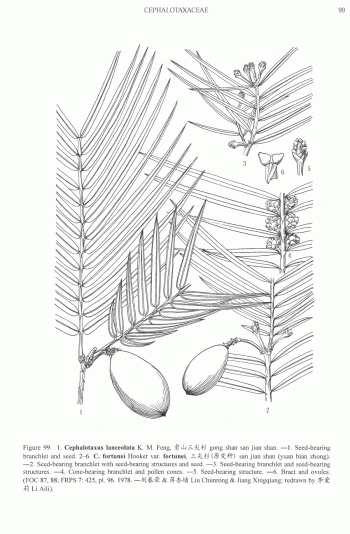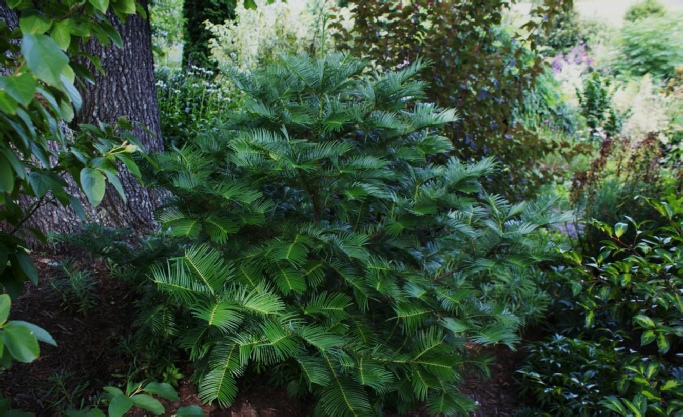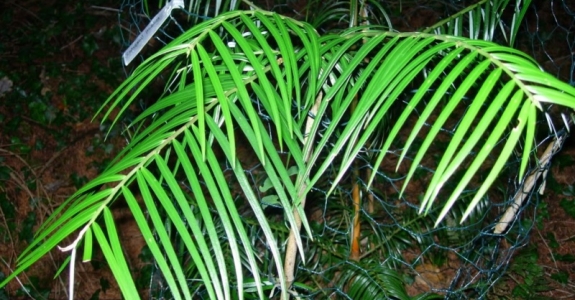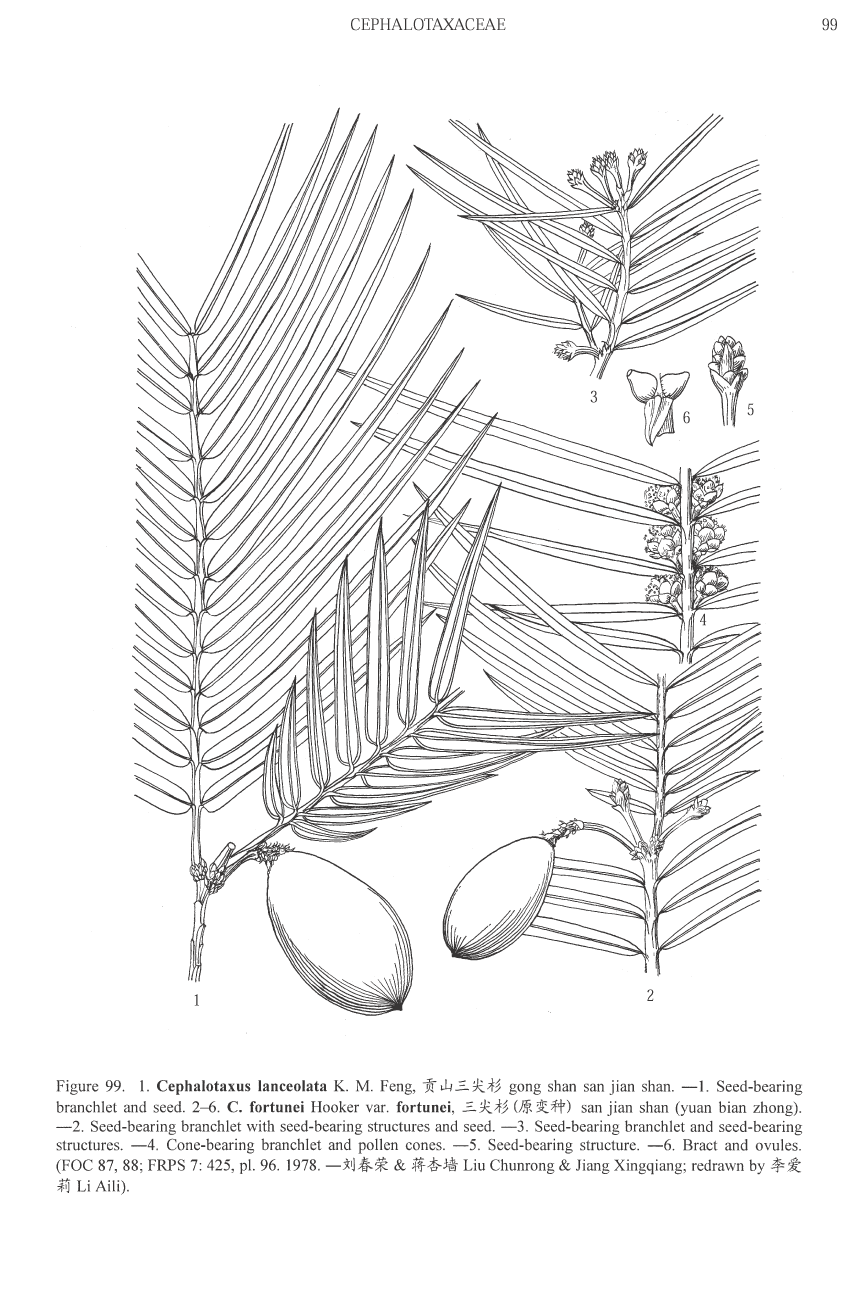Cephalotaxus lanceolata, as described in 1975 by K. M. Feng in W. C. Cheng et al., in Acta Phytotax. Sin. 13. It is commonly known as Lance-leaf plum-yew; as well as è´¡Š±±ä¸‰Š°–æ‰ (gong shan san jian shan) in the Chinese language. According to Aljos Farjon, this conifer is considered synonymous with C. fortunei var. lanceolata (Feng) Silba 1990, who considers it nearly indistinguishable from C. fortunei; it holds a dubious claim to species rank.
Description. Lance-leaf plum-yew in an evergreen coniferous species of small tree that grows to mature heights of 65 feet (20 m) tall with a trunk up to 16 inches (40 cm) in diameter, measured at breast height.
- Bark is purple and smooth.
- Branches are pendulous; leafy branchlets resemble 2 adjacent parallelograms in outline, and are broadly "v"-shaped in cross section. Apices are abruptly truncate.
- Leaves spread more-or-less horizontally at a circa 45° angle to branchlet axis; leaf petioles are very short; leaf blades are colored dark-green adaxially, with linear-lanceolate outline, distally tapered, and are straight or slightly falcate-shaped. Individual needles are long and thin, measuring 1.8 to 4 inches (4.5 - 10 cm) long and 0.16 to 0.28 inch (4 - 7 mm) wide, with leathery texture. Abaxial stomatal bands are white with rounded bases, revolute margins, and long, acuminate apices. It differs from C. fortunei in its long, slender needles, about 3 inches (7.5 cm) long and 0.12 inch (3 mm) wide; needle edges are nearly parallel before a sharply acute apex, a morphology that inspired the epithet lanceolata.
- Pollen cones are borne on 0.2 inch (5 mm) long peduncles.
- Seeds cones include a 0.6 to 0.8 inch (1.5 - 2 cm) long peduncle at maturity. Arils turn greenish brown when ripe.
- Seeds are obovoid-ellipsoid shaped and measure 1.4 to 1.8 inches (3.5 - 4.5 cm) long.
Distribution. This species is native to China - northwestern Yunnan (Gongshan Drungzu Nuzu Zizhixian: banks of upper Dulongjiang); as well as northern Myanmar. Occurs as scattered plants in broad-leaved forests at elevations of circa 6,200 feet (1,900 m) above sea level. It is officially an endangered species in China.
Hardy to UDSA Zone 8 - cold hardiness limit between 10° and 20°F (-12.1° and -6.7°C).




